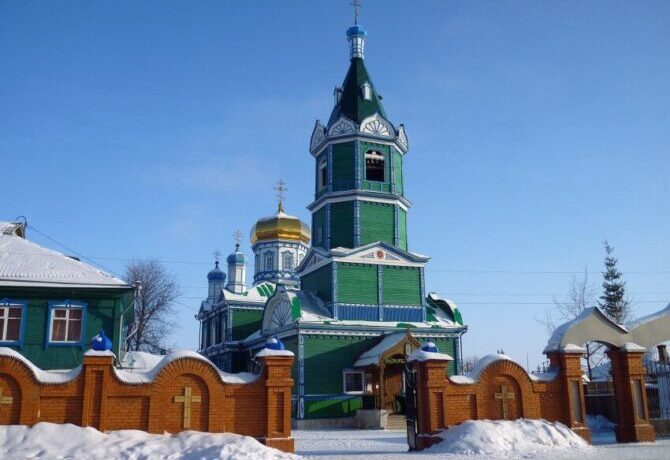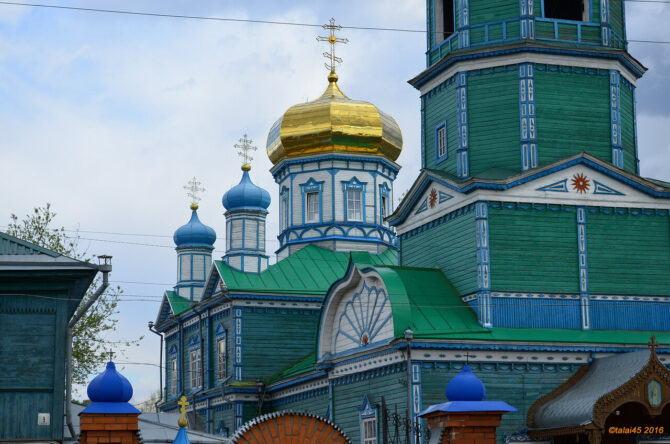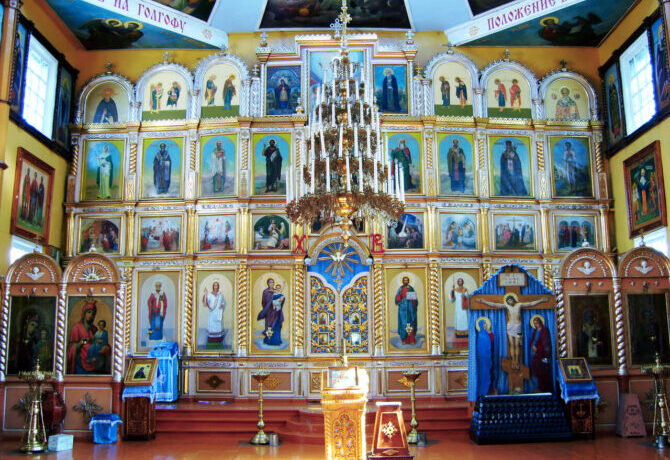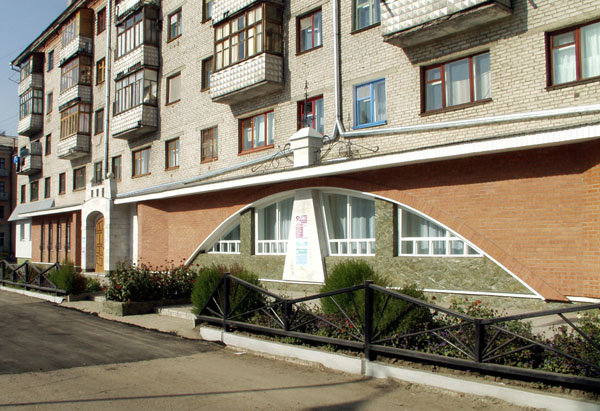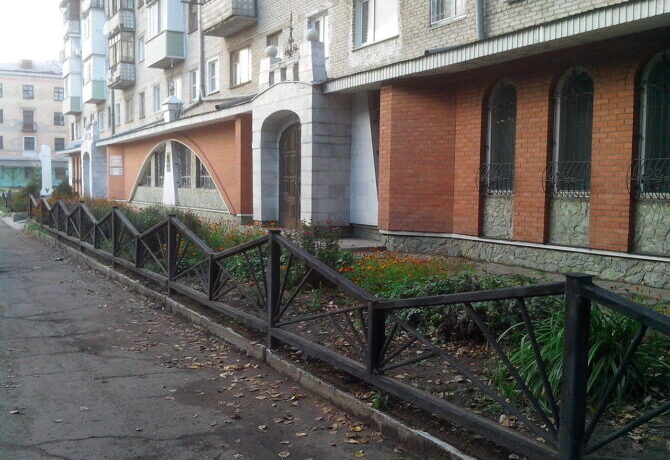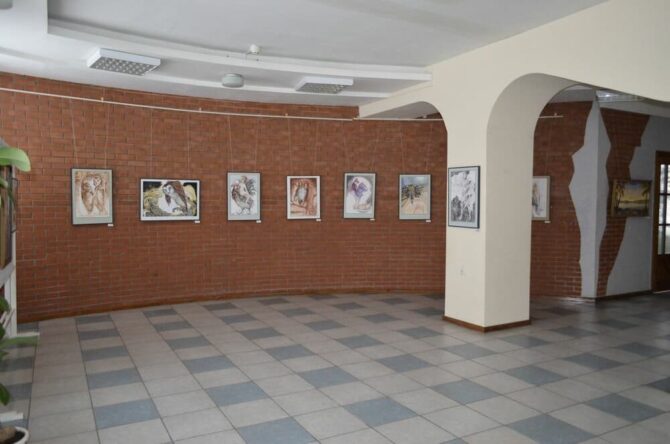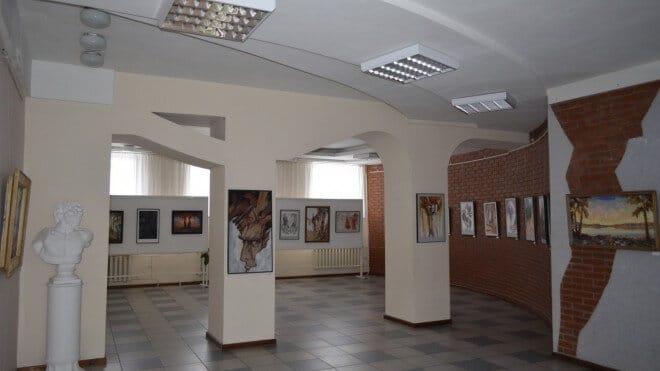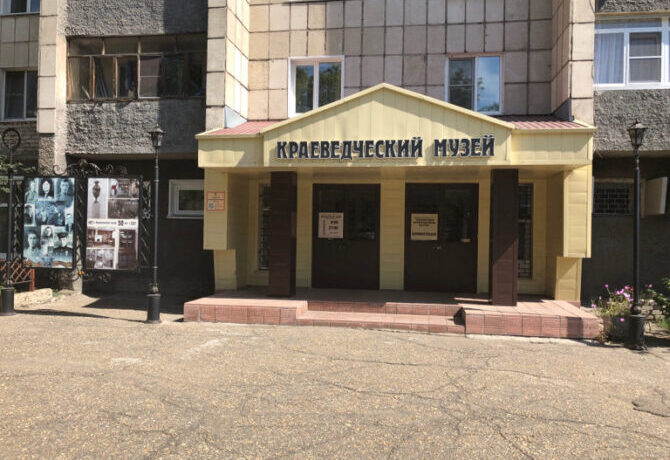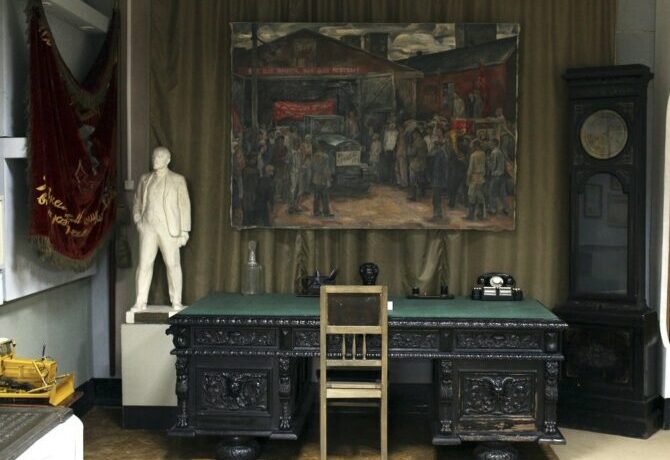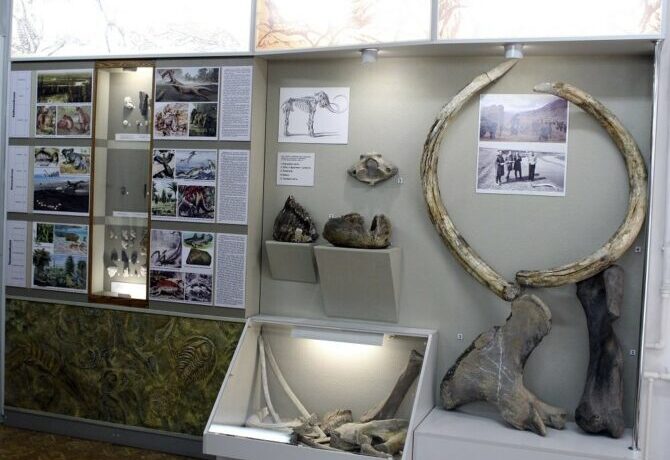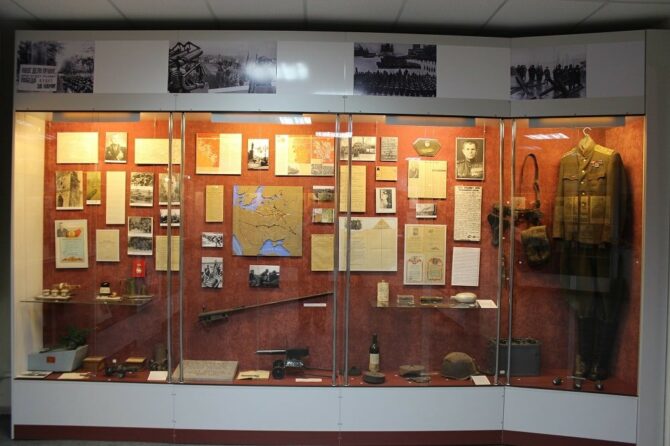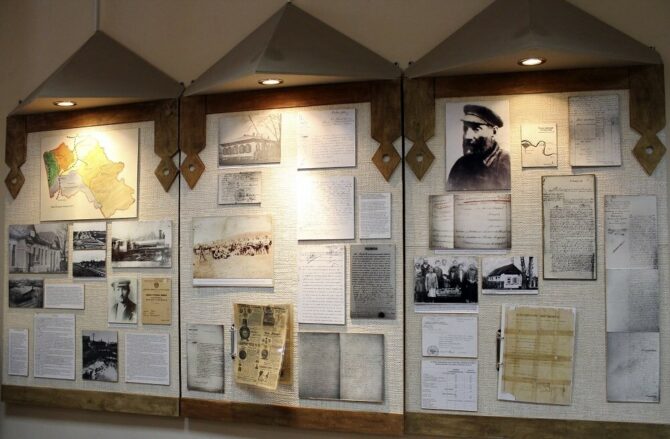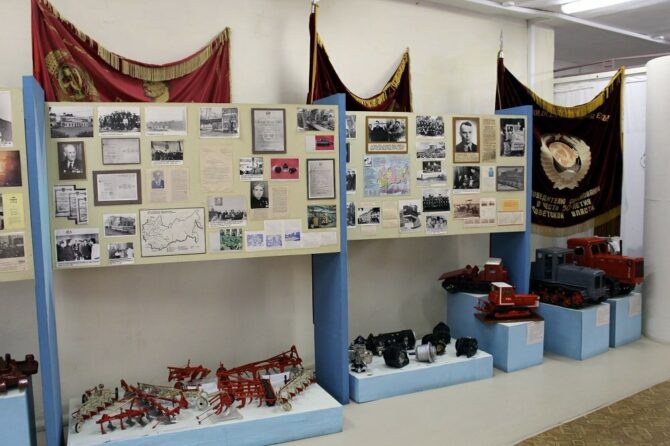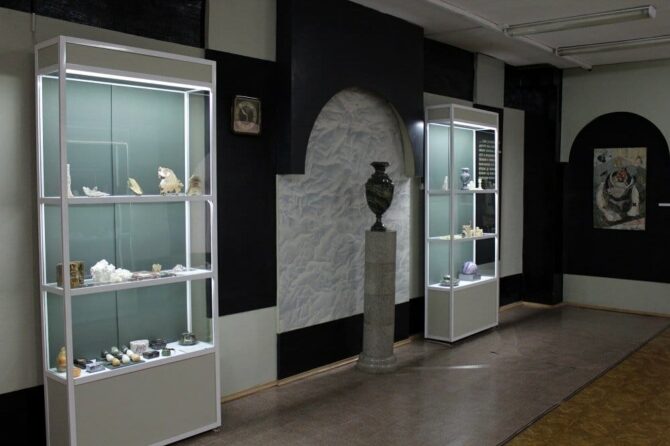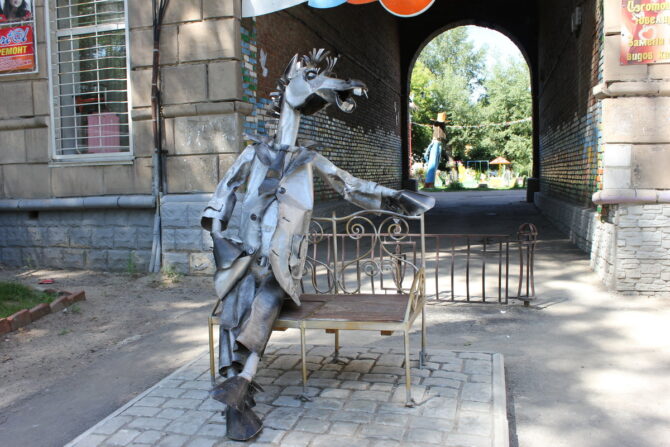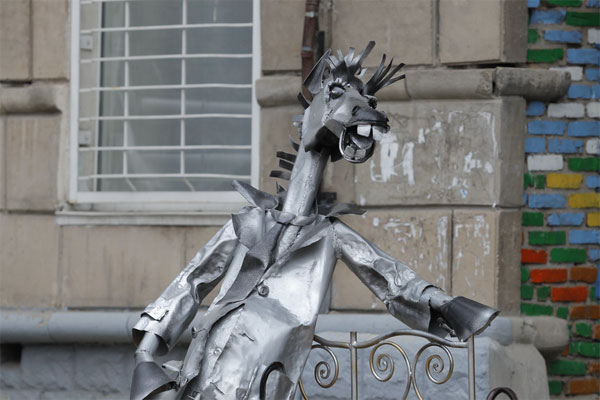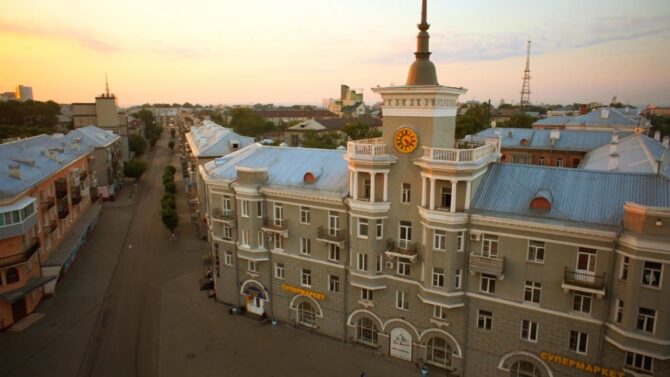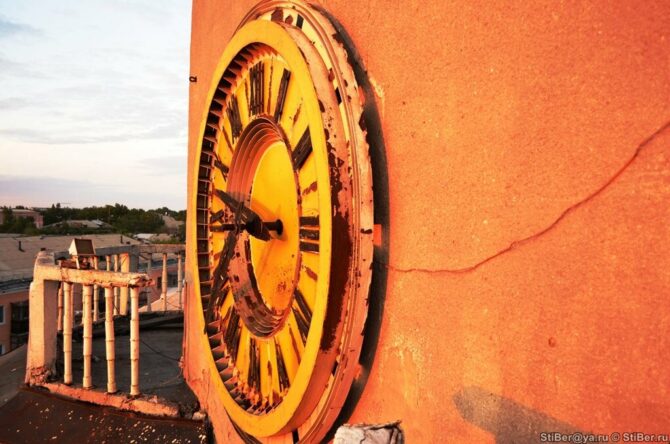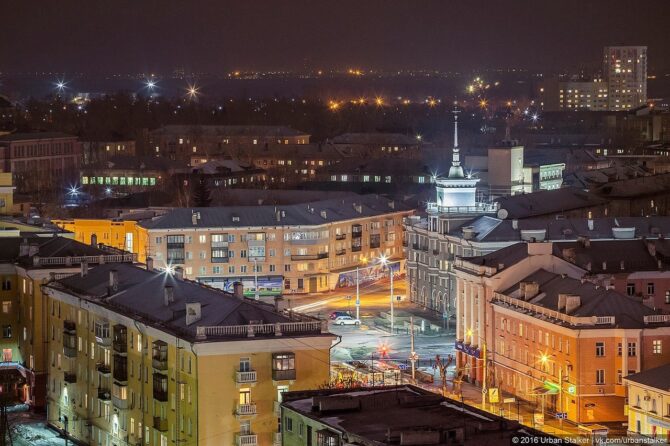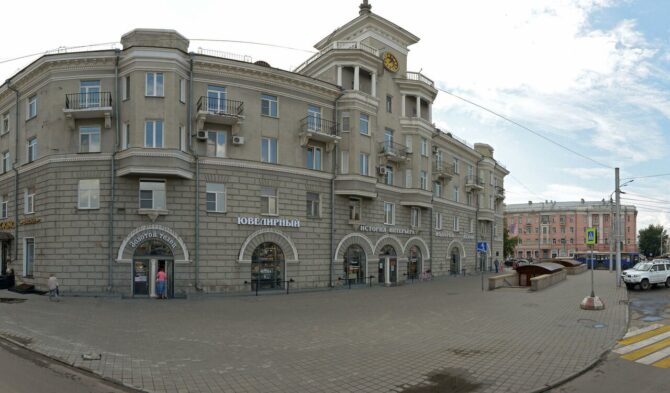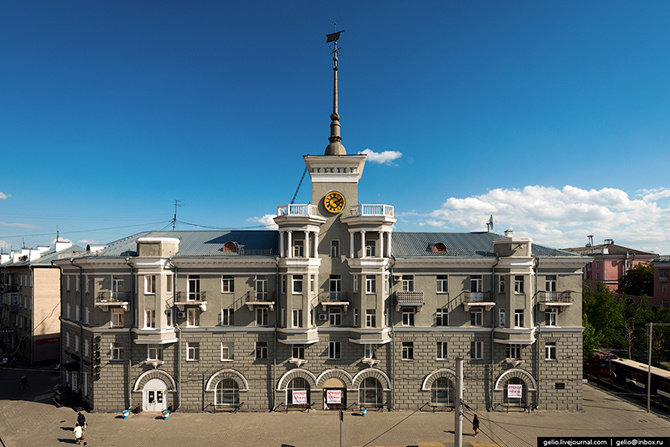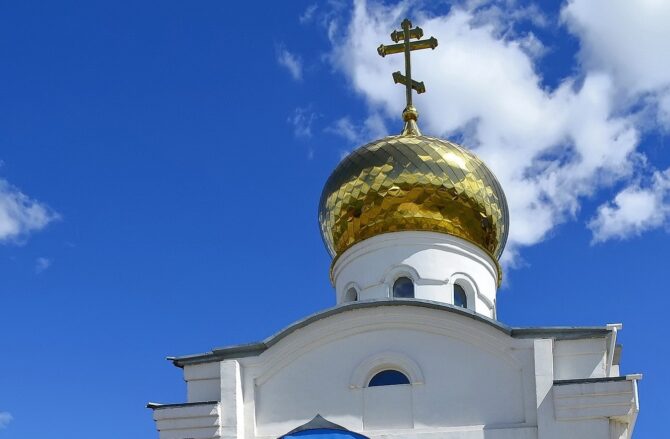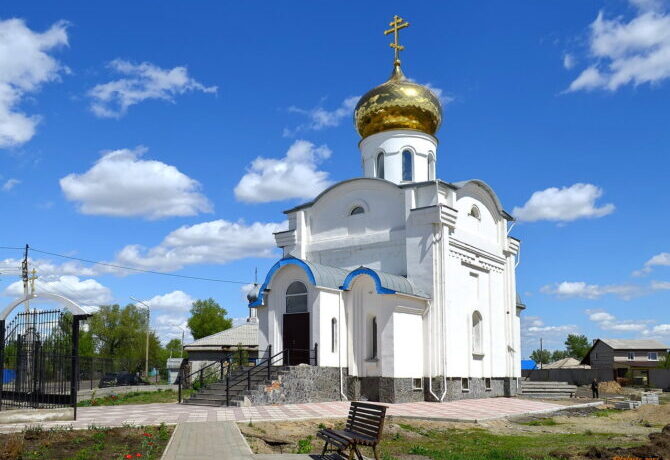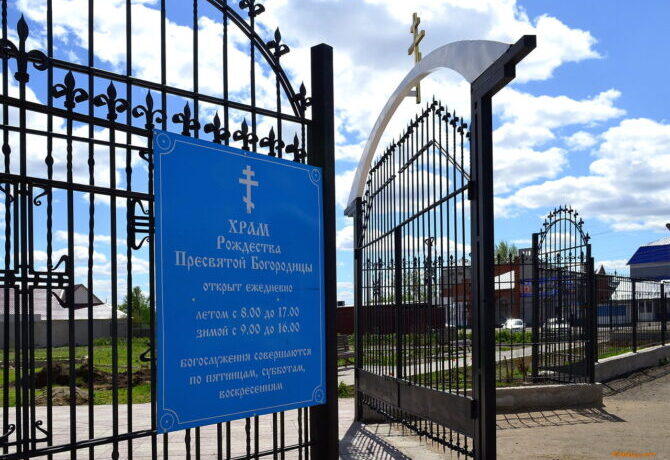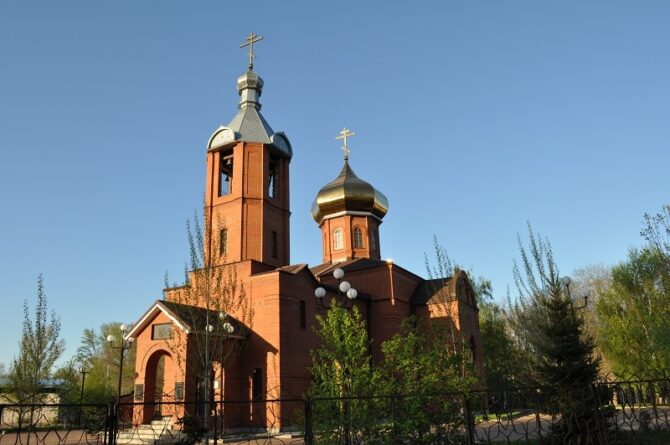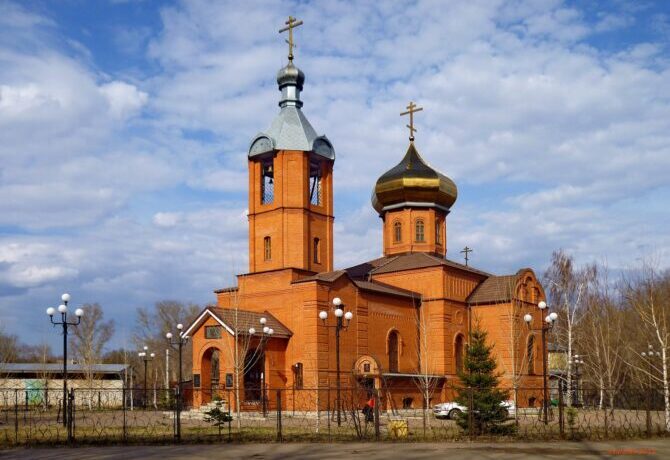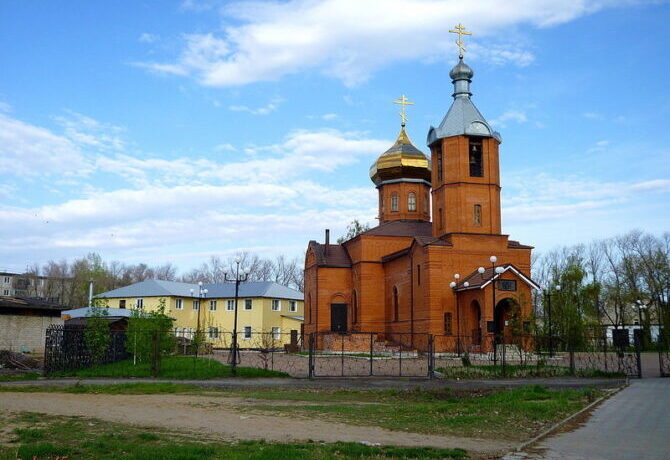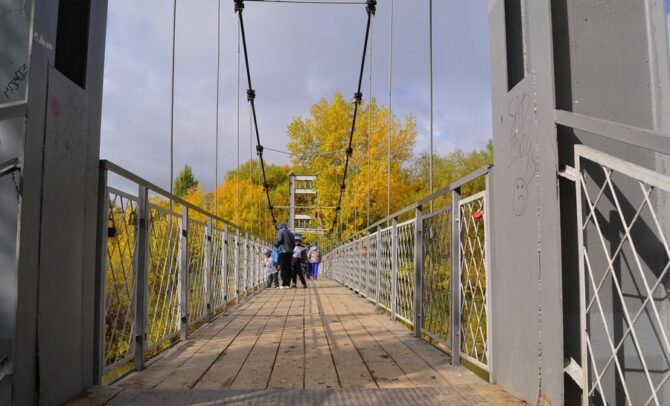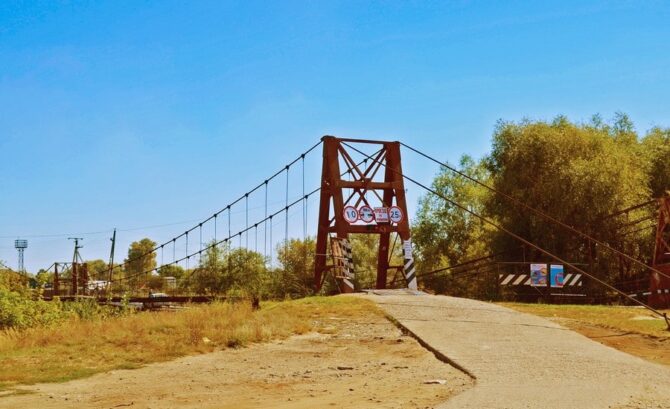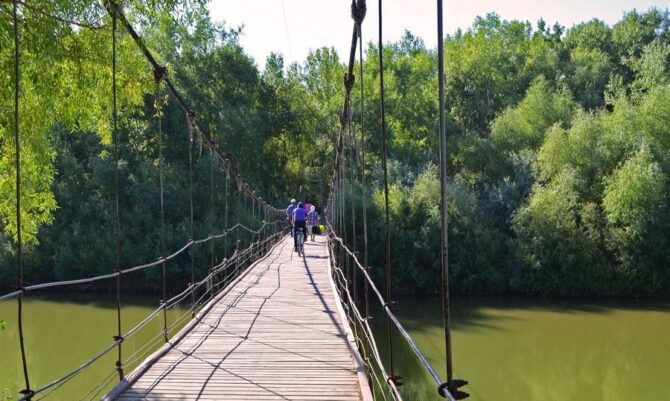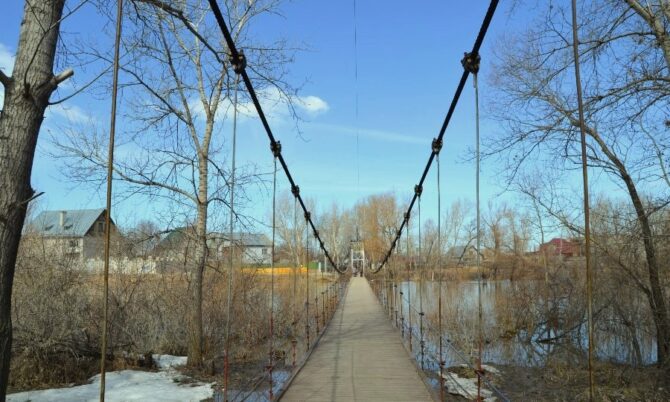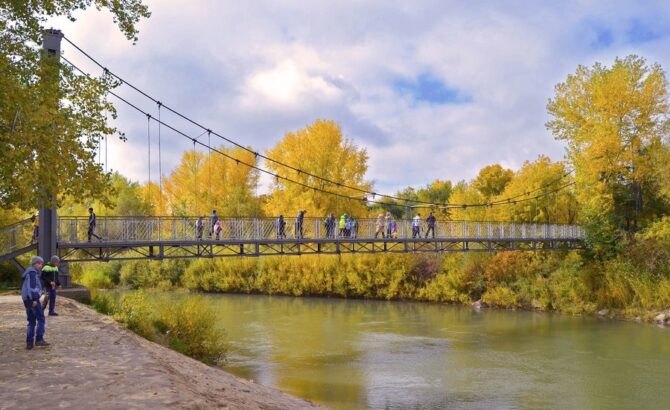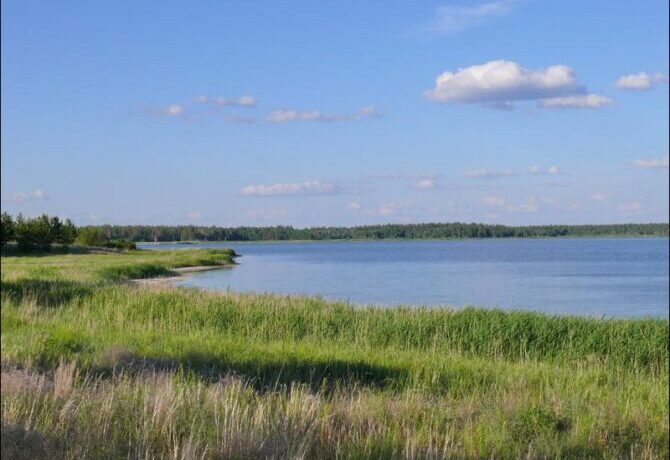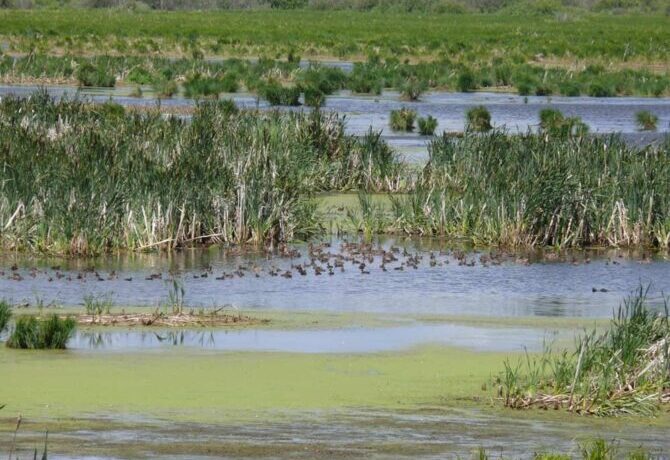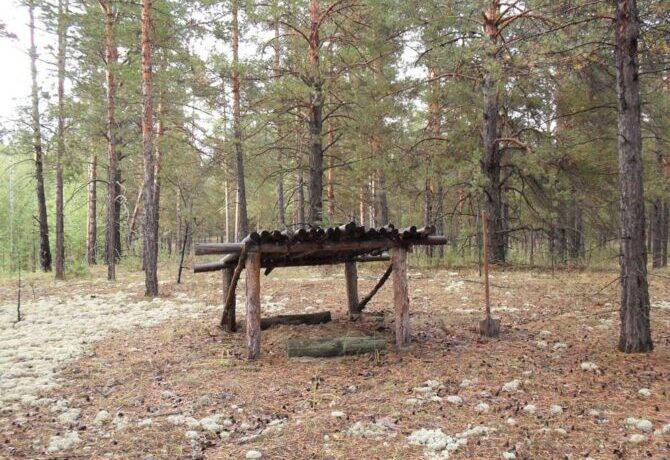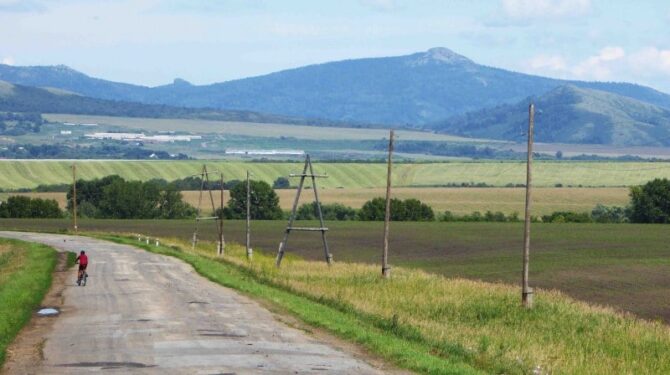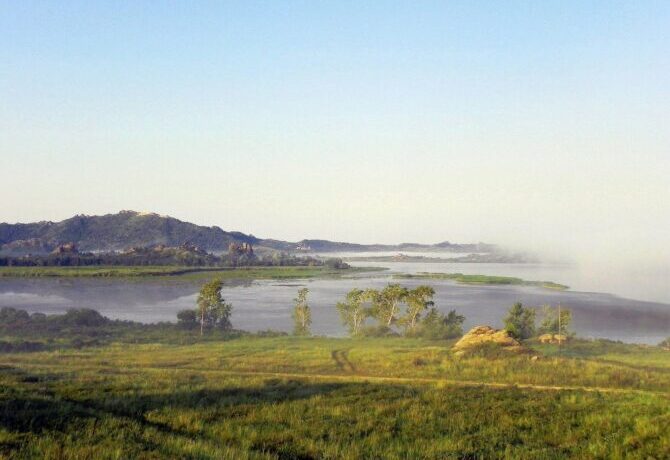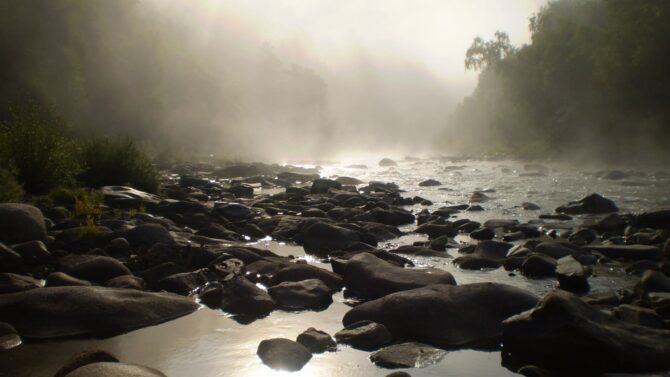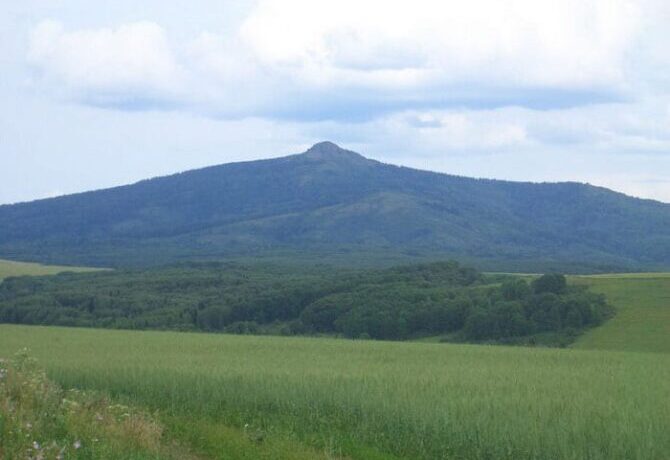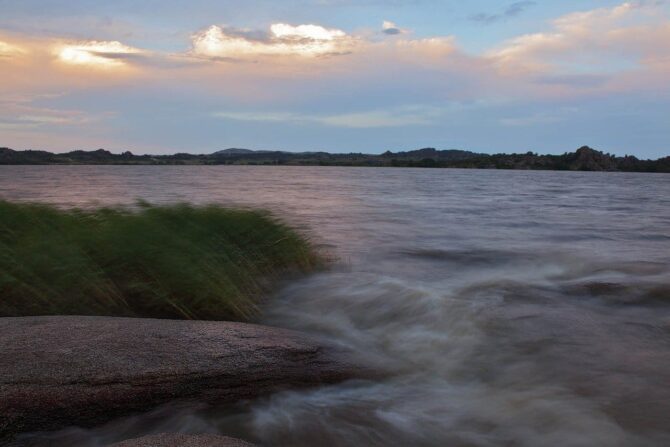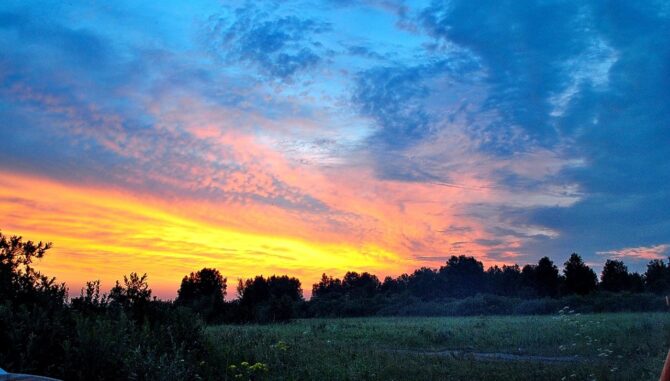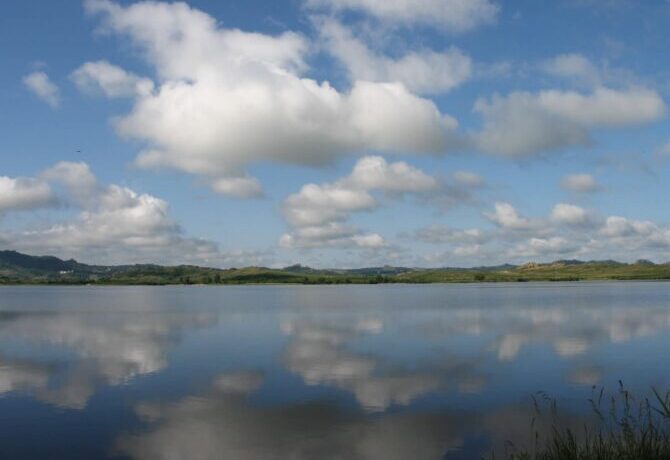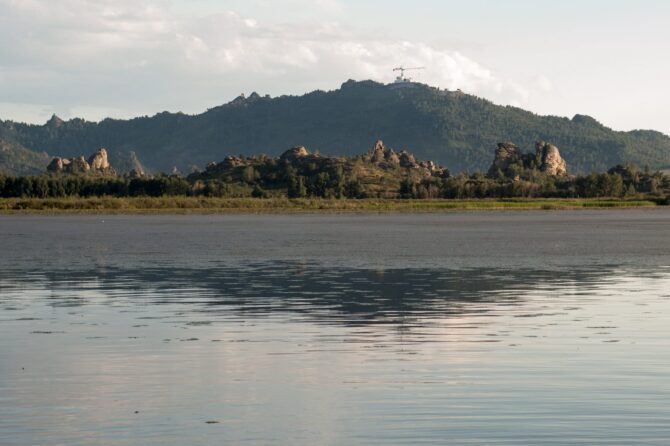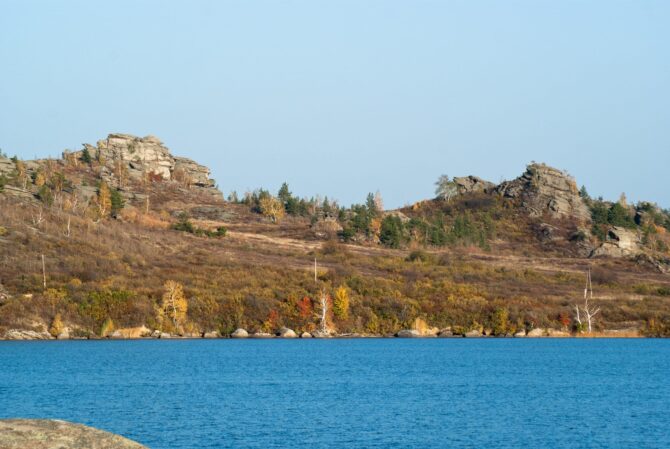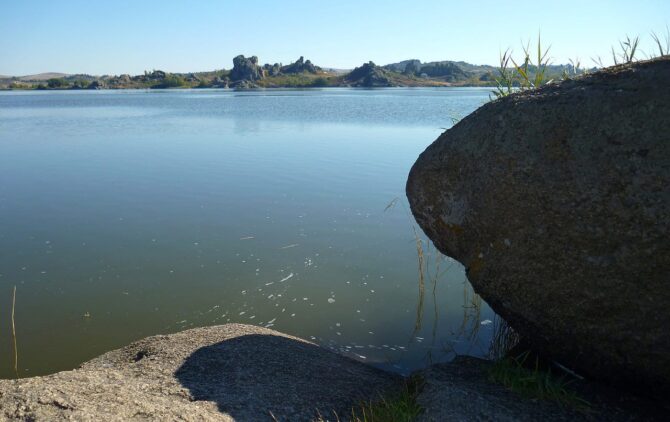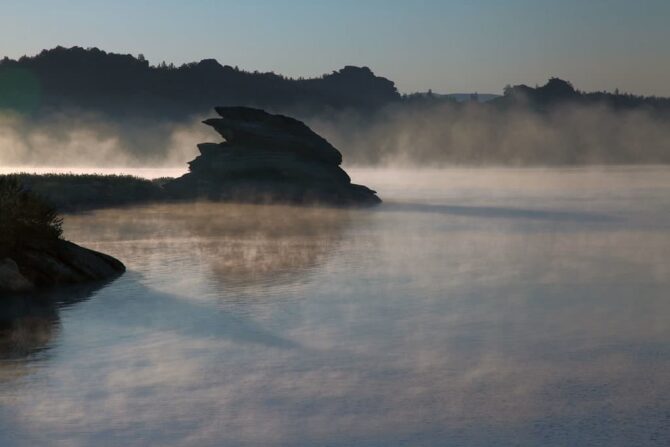Before the collapse of the Soviet Union, Rubtsovsk was the largest machine-building center in Siberia. But behind the industrial progress and development of enterprises, many have forgotten that there is a unique natural area inhabited by birds and animals listed in the Red Book. Although the city arose only in 1929, this territory was once chosen by ancient people. Their sites are found throughout the district, and in the museum of local lore a whole exposition hall with tools, household utensils and jewelry characteristic of the primitive system has been compiled. Here were found deposits of brocade and green-wavy jaspar, which glorified the art of Russian masters of decorative and applied art around the world. The city has good hotels that provide services to all guests of Rubtsovsk. Travelers are advised to spend one day on acquaintance with the city’s attractions, and then for a few days to go beyond it.
- 1 Attractions Rubtsovsk on map
- 2 St. Michael’s Archangel Church
- 3 Art Gallery. V.V. Tikhonova
- 4 Museum of Local Lore
- 5 Horse in coat
- 6 House under the spire
- 7 Church of the Nativity of the Blessed Virgin Mary
- 8 Church of the Nativity
- 9 Embankment of the river Aley (suspension bridges)
- 10 Volchikhinsky reserve
- 11 Mount Revnyukha (Zmeinogorsk)
- 12 Kolyvan Lake
Attractions Rubtsovsk on map
St. Michael’s Archangel Church
For more than a century, the majestic Mykhailo-Archangel Cathedral has served people. It is built of wood in the tradition of Siberian architecture. For the compositional solution, a typical nave for Siberia (a ship with a mast-bell tower) was chosen. The building has an oblong shape, the middle hall will interfere with up to 400 people. The territory is surrounded by a brick fence. Nearby there is a public transport stop “Church”.
The cathedral rises in the historical center of Rubtsovsk. The church was consecrated on February 4, 1906. Funds for its construction were allocated from the royal treasury. The interior mural illustrates the main events described in the Bible. In the Soviet period, the church was closed and adapted for economic needs. The iconostasis was dismantled, some icons were irretrievably gone. The temple began to revive after the Second World War. Its recovery is still ongoing.
Parishioners played a big role in funding and reviving the church. By some miracle in the fund of the local history museum survived Fedorovskaya icon of the Mother of God. For the 300th anniversary of the reign of the House of Romanov in 1913, several such icons were painted, which were sent as gifts to Russian parishes. After the revolution, the relic was considered lost. Museum staff found it in the vaults and found a way to return to its former place. The wooden temple in 2005 was recognized as an architectural monument. Today it is the Cathedral of the city and is assigned to the Rubtsov Orthodox Diocese.
Address: Rubtsovsk, Sovetskaya str. 9
Art Gallery. V.V. Tikhonova
A popular structural unit of the local history museum is the art gallery. Tikhonova. It is included in the tourist route and is of interest to those who want to get acquainted with the artistic art of the masters of Rubtsovsk. The idea of creating an exhibition hall of paintings by local artists arose in 1989. The administration has allocated the premises and funds for its equipment. The gallery was named in honor of Vladislav Vladimirovich Tikhonov. He was the oldest artist of the city, its honorary citizen, a man completely devoted to art.
The gallery organizes exhibitions of works by Rubtsov artists. These are paintings, graphics, arts and crafts, icon painting, folk and author’s dolls. There is also a permanent exhibition composed of paintings by brush masters from Moscow, St. Petersburg, Baku and other cities. The collection is made up of works of the mid-twentieth and early XXI centuries. For guests of the city, schoolchildren, students, thematic meetings and various master classes on applied creativity are held. Entrance fee. Discounts are available for children and students. The day off is Monday.
Address: Rubtsovsk, Lenin Avenue 133
Museum of Local Lore
To get acquainted with the history of the city and its environs invites the municipal museum of local lore. It was founded in 1967. the exposition is divided into 7 main halls. Among them: “Kolyvan stone-cutting”, “History of the village of Rubtsovo”, “Rubtsovsk industrial”, “Nature and ecology of the golden Altai”. A separate hall tells about the period of the Great Patriotic War, the exploits of residents who fought and worked in the rear.
The museum regularly hosts thematic events. A huge help for this type of activity was the organization of the video studio “Skaz”, thanks to which a video library of the most important events that have become archival in our time was formed. The funds are constantly replenished with archaeological finds, numismatics, herbariums, weapons, old books. In the vaults of the museum there are more than 23 thousand visual exhibits. Excursions are conducted by researchers-local historians.
Address: Rubtsovsk, Lenin Avenue 137A
Horse in coat
What Rubtsov sculptors do not occupy is a sense of humor. Alexander Dolgiy decided to capture in metal the famous phrase on the horse in the coat, creating the most famous art object in the city. In 2010, he founded his own workshop “The Third Forging”. By this time, the masters were often invited to design various city objects. Thanks to him, some expositions of the museum of local lore found a second life. During the major reconstruction, he developed projects and designed the halls “History of the development of life on Earth”, “The Great Patriotic War”, “The Foundation of Rubtsovsk”.
Connoisseurs of art note that all the works of the sculptor are monumental. Even sitting on the bench “Horse in a coat” is thought out to the smallest detail. The height of the figure is 2 meters. A sweetly smiling horse to passers-by, dressed in an elegant coat, from the pocket of which a horseshoe sticks out, for good luck. It is no coincidence that none of the wedding motorcades passes by the monument. The sculptor provided a free space near the figure for those wishing to be photographed with an unusual exhibit. According to the residents of the city, this horse is able to survive all the cataclysms, which means that it is possible to protect itself and its city.
Alexander Dolgiy is also the author of the sculptures “Firebird”, “Nurse-Angel”, “Clown on a Unicycle”, “Unconquered”, “Girl Feeding Pigeons”. All works are located in the city center – in the memorial square, near the store “World of Childhood”, the courtyard of the kindergarten, the site near the hospital. The author practically presented his works to the city. He charged a nominal fee for them to cover the cost of materials a little.
Address: Rubtsovsk, Dzerzhinskogo str. 13
House under the spire
In the historical part of Rubtsovsk there is a building that has long been considered a symbol of the city. He was photographed for sets of gift cards, tourists were taken to him, telling how in 1928 Stalin visited Altai, visiting Barnaul and Rubtsovsk. In honor of this event, the central square for a long time bore the name of the “father of nations”. In 1949, the construction of a residential building began here. The project of Stalin’s skyscraper was created by the Kharkov architect A.M. Semenov. It was the most elite house in which many wanted to get apartments. The monumental structure was decorated with a rotunda with a spire.
While the city prospered, the building was regularly renovated. Then the economic downturn began and the house went into disrepair. The tenants were resettled in new buildings, and Stalin’s building was surrounded by a fence. Due to lack of funds, builders did not appear at the facility as often as required to save the attraction. In the summer of [y], the house collapsed right in front of the rubtsovtsy. The rubble has not yet been cleared. Among the wreckage, an almost undone rotunda lies picturesquely. Even by the ruins, you can judge the large-scale structure, which was once the famous House under the spire.
Address: Rubtsovsk, Komsomolskaya str. 124
Church of the Nativity of the Blessed Virgin Mary
The construction of the snow-white stone temple began in the 90s. Due to the constant lack of funds, its construction lasted for 17 years. Initially, it was decided to build a new church in the traditions of Russian Orthodox architecture. In 2007, a three-domed temple with golden domes appeared on the Novo-Yegoryevsky tract. It rises in the middle of the private sector and is the main parish for nearby residential sectors.
The clergy immediately established contact with the locals. The parish became a kind of place of meeting and communication according to interests. On Sundays, the akathist “The Inexplinable Chalice” is read here. Immediately after it, a conversation is held with relatives of people suffering from alcohol or drug addiction. In the temple there are Sunday schools for adults and children. Before the holidays, parishioners gather here to decorate the church. Often after the Divine Liturgy, a tea party with pastries is arranged.
The area around the temple is ennobled. Parishioners planted a large number of trees, bushes, broke flower beds. Old photographs show how the construction was carried out, landscape work was carried out. To date, they are not yet finished. The main shrine of the temple are pieces of the relics of the blessed Matrona of Moscow, which were presented to the parish by one of the parishioners. The painted icons were ordered in Novokuznetsk.
Address: Mendeleev str., 2
Church of the Nativity
The brick church in the Siberian architectural tradition was built in 2007. in structure it is similar to the Mikhailo-Archangel Cathedral, only completely made of modern materials. Its construction took 4 years. The place was decided by chance. In the 90s, the construction of an object began on a vacant lot, but the investor disappeared somewhere, the money ran out, the construction stopped at the stage of digging a pit. So he stood, overgrown with weeds, until the new authorities decided to correct the situation. At that time, there were already three churches in the city. The administration decided that the fourth would not be superfluous.
The project was developed taking into account the architectural specifics of Siberian churches. The three-nave church with minimal decoration, high bell tower rises on the outskirts of the city and is the only parish for several residential sectors. The territory is ennobled, the courtyard and the building are illuminated, beautiful lanterns are installed along the perimeter. Believers from different districts come here for services. The townspeople sincerely consider it the best church of Rubtsovsk. There is always silence and peace and tranquility.
Address: Altaiskaya str., 175A
Embankment of the river Aley (suspension bridges)
You can finish the tour of the city on the Embankment of the Aley River. The founder of the city Mikhail Rubtsov at one time put the first tent on the right bank, and residents eventually preferred the left bank, and on the site of the foundation are now located suburban areas. Now both parts of the settlement are connected by suspension bridges, which serve as both pedestrian crossings and attractions. A total of 5 bridges were built. It is recommended to start the walk from the southern part of the city, from the houses near the dam of the hydroelectric system. This will be the starting point of the route. There are 2 bridges. Both are designed for vehicles and pedestrians. The traffic is one-way, so one by one you can walk or get to the holiday villages, the second to return back.
The next bridge was on Selmashskaya Street. In the 50s, it was not repaired in time, and it collapsed into the water with passers-by. There were victims, so the authorities decided not to build a crossing on this site anymore. By the way, the water in the Aleya is muddy from a large accumulation of silt. In autumn, it becomes transparent and acquires a beautiful malachite hue. Such beauty lasts until spring, while there is ice.
A very picturesque bridge starts from Aleysky Lane. It also leads to the cottages of the Horticultural Association No. 1. There used to be a nice beach on the right bank. Now it gradually overgrows, but a lot of people still go there out of habit. This bridge is monitored, repaired, updated board covering. The next bridge is concrete. It is the main city crossing to the other side. It is located on the Zmeinogorsky tract, suitable for cars and pedestrians. Unlike other bridges, it is capital. It was built in 1967, completely renovated in 2012.
A little further is the main walking bridge of the city. It is laid in the park of culture and recreation. N. Petrov, directly from the Aleya Embankment. The bridge was built in 1977. it’s suspended, but it doesn’t swing like the others. The last renovation with a complete replacement of the wooden deck was carried out in 2018. At the same time, openwork railings were painted, which are additionally used by lovers and newlyweds to hang locks. From the bridge there are excellent, suitable for photo shoots, views of the river and the park.
After it, there are two more bridges to be seen. One is located south of Tikhvin Street in the area of the old water intake. The final point of the route is Svetlova Street. A pedestrian and automobile bridge has been built here, a walk along which will also bring pleasure.
After such a busy day, it is worth returning to your hotels to go to explore the surroundings of Rubtsovsk the next morning after breakfast.
Volchikhinsky reserve
In 1971, within the framework of the program to protect the natural ecosystems of the Kasmalinsky forest, the Volchikhinsky Reserve was created. Its border runs along the Rubtsovsko-Volchikhinsky highway. The main task was to preserve the living conditions of wild animals (roe deer, elk, squirrels, foxes, badgers, columns), birds (capercaillies, grouse, river and diving ducks), as well as a biome for many plants listed in the Red Book. Since its foundation, the reserve has become an attractive area for outdoor recreation and ecotourism. By and large, this is a wild pine forest, in which animals are found, seasonal shooting of game and hunting are allowed. Before going with a tent and a pot, it is best to call the administration and consult where you can go and where to camp. Contact phone ranger – 8-960-948-05-23.
A road is laid through the pine belt forest. On it you can get to the salty Wolf lakes. This is a popular place where residents of the whole region rush in the summer. Water has useful properties. 9 km from the village of Volchikha is Lake Zhirnoye. The water contains a lot of mineral nutrients. The banks and bottom are covered with therapeutic mud. Swans come here for the summer, the lake itself is considered a natural monument protected by the state.
Lake Stuffy is rich in the same salts and mud. This is another natural health resort on the territory of the reserve. Having set up a tent on the shore, you can relax in a pine forest, take daily health mud baths. Hotels and sanatoriums may not be needed by unpretentious tourists who like to relax in nature.
Address: Rubtsovsk – Volchikha village, Altai Krai, Russia
Mount Revnyukha (Zmeinogorsk)
Altai is a storehouse of natural monuments. One of them is lost in the taiga mountain Revnyukha. To climb to a height of 1100 meters in the middle of a wild forest, you must first drive to the city of Zmeinogorsk or start the route from the villages of Lipovka or Galtsovka. What is the mountain famous for? The fact that there mined Revnev green-wavy jasper. Unter-steiger Fyodor Kuzinsky, who discovered this deposit in 1771, could not even imagine that his name would forever fit into the history of the extraction of Russian gems. Products from local jaszma scattered around the world, replenishing the collections of museums, collectors and jewelry lovers.
Today, the quarry has exhausted its resources. In memory of the beautiful works of art created from jasparse, on the very top of the mountain there is a giant nugget (block) found in one of the mines. Such a boulder of jastic, of course, was not a one-time find. Vases were made of such blocks. One of them with a height of 2 m 92 cm adorns the Paris Town Hall. It was presented to the capital of France by Alexander III. Another one stands in the hall of the New York Stock Exchange, and the largest vase is included in the Hermitage Fund. It weighs about 20 tons. The stones were used for the manufacture of columns for the Cathedral of Christ the Savior in Moscow, oval bowls for the Hermitage.
From the top of Revnyukhi there are beautiful views of the Altai expanses. The slopes of the “Queen of Vases” are covered with forests. It is better to carry out the ascent accompanied by a local guide or guide. The path is not easy, so you need to prepare comfortable shoes for walking on stones, food and drink. The area is wild, there are no cafes and shops nearby. The distance from Rubtsovsk to Zmeinogorsk is 90 km along the road. If the journey is delayed, the hotels of Zmeinogorsk will provide places for the night. Travelers speak well about the hotels “Ermak”, “Russian service”, “Alice”.
Address: Zmeinogorsk district, Altai. Russia
Kolyvan Lake
In two hours you can get by car to the main lake of the surrounding area – Kolyvansky. This is the most visited natural attraction. Here are the main camp sites, places of organized recreation (entry 50 rubles. per person or 300 per car). Tourists are attracted not only by the clean and warm water of the flowing lake. Nature itself has created a bizarre landscape design along the coast. It is strewn with granite rocks-remains of the most amazing forms. On the shore there are equipped beaches, wild wetlands, rocky elevation. Everyone who wants to relax in nature will find a place to their liking.
Judging by the archaeological finds, this lake has always been an attractive place for human habitation. On the northern shore discovered a parking lot of ancient people. Now the excavation site belongs to the archaeological site “Kolyvanskoe-1”. This is a complex of 6 burial mounds. Next begins the Kolyvan Ridge, on which the Optical and Laser Center is located. German Titov. This is a military facility and excursions are not held in it. Despite the fact that the entrance to the coast is paid, there is no rebound from those who want to relax here. In order not to be left without a place in the sun, it is better to call in advance and book a campsite, a room in the guest house “U Rodnika” or at the camp site.
Address: Zmeinogorsky District, Altai Krai, Russia


